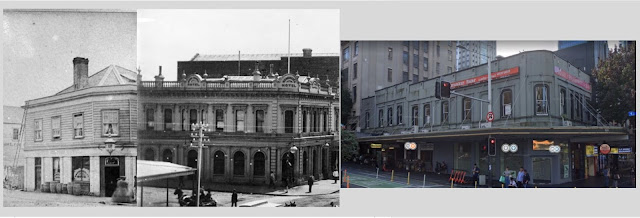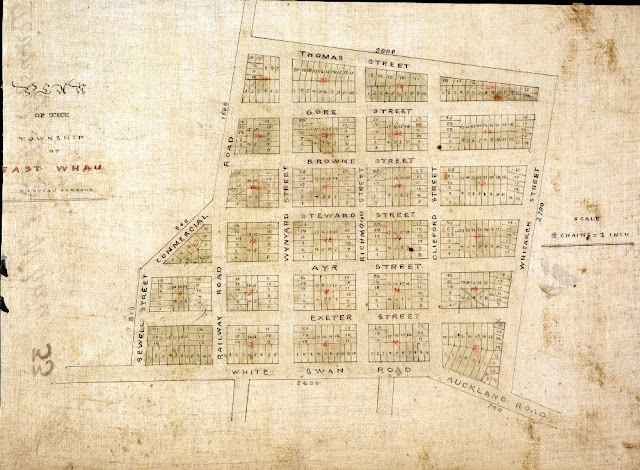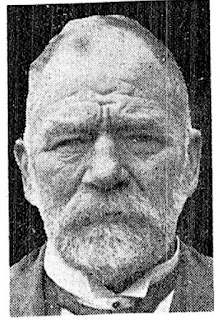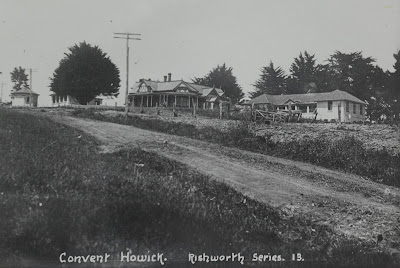The Elephant House at Auckland Zoo. Detail from Henry Winkelmann image, 1-W0652, Auckland Libraries Heritage Collections
This year, Auckland Zoo looks set to celebrate its centenary in December, depending on how the pandemic goes. This year also, the zoo has said goodbye to one of their two remaining elephants, and is set (at the time of writing) to say goodbye as well also to Burma, the last zoo elephant left in the country, as soon as another home can be found for her.
Back in 1954, the zoo also had two elephants: the still-well remembered Jamuna, and the forgotten Kassala, a young addition that arrived in Auckland in 1952, was sold to Bullen’s Circus in 1957, and ended up dying from poisoning in Australia in 1960. It was Jamuna who, one afternoon in August 1954, abruptly ended Frank Lane’s life.
Zoo keepers these days are well-trained professionals, who have often studied in their fields of expertise. Back in the 1950s however, those who worked with the animals at the zoo were more often than not gardeners, labourers, truck drivers, those who generally worked as Parks Staff for Auckland City Council, and did not have the same level of training. Nor the keen awareness of the health and safety hazards the jobs they carried out brought with them.
Francis (Frank) Wallace Lane was born c.1889 in Ryde on the Isle of Wight in England. His father was a farm worker, and working on the land was what Frank would do as well. Sometime before late 1911 he arrived in Auckland, and worked as a landscape gardener. By at least 1922, he had a job with the Auckland City Council, and was living at the Auckland Domain cricket grounds. Later reports said that he was one of those who worked on transforming the rough landscape at Western Springs into the Auckland Zoo grounds in time for the zoo’s opening on 16 December 1922.
By 1925 he was living nearby, in Bannerman Road, Western Springs, and in 1929 married widow Florence Maud Rowntree.
The previous year, Florence had purchased land at 18 Muripara Avenue in Pt Chevalier, in behind Walker Park. The property remained solely in her name until her death in the early 1980s.
By 1954 Frank Lane was 65 and still working at the zoo, but as second man on the truck that picked up the elephant manure in the mornings from the back of the Elephant House, the grand structure built in the 1920s with a viewing area and two elephant pens. Each morning, during the mucking out, he’d bring Jamuna some bread, feeding her via her trunk, or sometimes straight into her mouth.
Jamuna’s main keeper, Albert George Barnett, died suddenly on 15 July 1954, just over a month before the incident where Lane died. Another keeper, Albert George Paddy, was being trained as his replacement, but was having time off in mid August. Yet another keeper, David Robertson, was ill, and would die in hospital three days after the incident – his absence added more pressure to second men with next-to-no training and expertise including Lane to help feed and look after the two elephants.
(Left) Jamuna, detail from Ron Clark image, 1956. Auckland Libraries Heritage Collections, 1207-783
Jamuna arrived from India in 1923. The Elephant House wasn’t completed, so her first home was the City Council depot in Patteson Street, Freemans Bay, where she staged a number of break-outs and caused considerable damage. She didn’t like being shackled. Sadly, she was shackled when she was at Freeman’s Bay, and also at the zoo within the Elephant House. Only when she was saddled and walking the circuit at the zoo, day after day, carrying load after load of adults and children for nearly 40 years was she free of the shackles – and on her best behaviour. At the Elephant House, it was a different story.
Jamuna arrived from India in 1923. The Elephant House wasn’t completed, so her first home was the City Council depot in Patteson Street, Freemans Bay, where she staged a number of break-outs and caused considerable damage. She didn’t like being shackled. Sadly, she was shackled when she was at Freeman’s Bay, and also at the zoo within the Elephant House. Only when she was saddled and walking the circuit at the zoo, day after day, carrying load after load of adults and children for nearly 40 years was she free of the shackles – and on her best behaviour. At the Elephant House, it was a different story.
Traffic noise from the Old Mill Road upset her in the night. She took an active dislike to certain members of the staff called in to look after her temporarily, either swinging her trunk at them, knocking them against walls, or spraying them with water. Her natural behaviour altered and hindered by the zoo environment, she developed a tell-tale swaying motion that some say points to her suffering from zoochosis, a mental illness.
On the morning of 17 August 1954, Lane was on the truck, and had brought Jamuna some bread before she started her day out on the pathways of the zoo. In the afternoon, she was brought back into the Elephant House, shackled, and Lane came in to help feed her and Kassala.
Jamuna was in the eastern cubicle, Kassala next to her in the western. The standard practice set by zoo director Robert Weller Roach was to have just one man feeding elephants, but two to clean out the stalls in the mornings; however his instructions were that two men had to be present whenever it was necessary to enter the pen. On that afternoon though, the second man, John Eder, was around at the rear of the building, outside.
Plan of the zoo’s Elephant House. Kassala was housed in the lefthand cubicle, Jamuna in the right. “Plans Auckland Zoological Park Elephant House including alternative scheme showing accommodation for two elephants”. Drawings 1 & 2 JW or Jev Beggate dated 13/03/1925.
Auckland Council Archives ACC 015 6132-1, 2 id. 473815, from their online exhibition.
With general complacency, those looking after the elephants had taken to using a short-cut, passing through Jamuna’s pen once feeding had been completed and closing the rear door from the outside. The feed room inside was on the western side of the elephant house, the attendants’ room on the eastern side. Lane got feed from the feed room, then he passed Kassala’s cubicle to feed Jamuna, then returned to feed Kassala. Then he came back, headed for the eastern-most side of Jamuna’s cubicle, and bent to duck under the railing for the usual short-cut through Jamuna’s pen and out the rear door. Jamuna at the time wasn’t facing the rails of her cubicle, but standing parallel to them, apparently standing just 18 inches away from the wall.
As Lane passed under the rails, Jamuna was swaying back and forth. Lane was seen to push Jamuna’s trunk aside and said “Let me get past.” According to testimony at the inquest, Lane would often reach out with his left hand to Jamuna’s trunk as he passed through the rails in front of her to head for the rear door, and would often have something in his hand to give her as he did so, like bread.
In this instance though Lane hadn’t quite straightened up when Jamuna swung her trunk forwards and hit him, catching him off balance. Lane fell backward. A staff member who witnessed what happened said he tried to call Jamuna, but wasn’t not alarmed at that point because (as he said) he’d “seen the same proceeding before.” He expected it to be just one blow, and that was all, just enough to wind Lane.
But then Jamuna swung her trunk again, and moved forward. This crushed Lane against the wall from the left. His ribs fractured, the pericardium around the heart split, his lungs and arteries were bruised, and his head squashed and shattered against the wall. Lane’s body then slumped down to the floor, semi-upright, legs drawn up, head bowed forward, arms limp. Blood was seen on Jamuna later “approximately half way between her tusks and her eyes and in the centre of her trunk.”
Jamuna didn’t touch the body again, but stayed put, moving Lane’s fallen hat around with her trunk. When truck driver James Henry Large first attempted to remove the body, Jamuna swung her trunk toward him, and he backed away. Others arrived, and tried to attract Jamuna to the other side of the stall, but she refused to move. They waited for Roach to arrive – during that time, they watched as Jamuna took two loaves of bread that were behind Lane’s body and eat them. Roach finally made Jamuna move back by brandishing a pitch fork, and Lane’s body was retrieved.
Frank Lane’s funeral was held at the Church of the Ascension in Dignan Street at 1.30 pm on 19 August, he was cremated at Waikumete Cemetery, and his ashes scattered a day later.
Two things probably saved Jamuna from the same fate as the earlier Rajah at the zoo, who was found to be unmanageable and so shot in 1936. She mainly misbehaved when shackled in the Elephant House, and not on her usual rounds – Roach, who was opposed to shackling her, had the fastening ring removed from the pen. On 20 August she was taken out from her pen, and ridden around the zoo by the chairman of the Parks Committee and his family, in perfect safety, just before the Parks Committee met to decide her fate. She was soon put back to work, and Roach ensured through alterations to the Elephant House that no staff member need put themselves in Lane’s position again.
The other aspect was that Jamuna was a valuable money earner for the zoo. Valued at around £1150 at the time of the incident, in 1946 it was reported that she carried more than 24,000 children per year, at 2d per ride, earning £203 (around $18,000) for just £95 in upkeep. In 1958, her earnings were up to £512 per annum (nearly $26,000), plus she was a drawcard in general to encourage visitors to the zoo, buying tickets and enjoying refreshments.
Jamuna died in September 1965 at the age of 58, estimated to have carried 750,000 children in her time at the zoo, but suffering from recurring chills, rheumatism and foot complaints. A few years before, she needed surgery for issues inside her great body, and at the time of her death, weighing 5 tons, was still two tons less in weight than she was on the day Lane took that fateful and ill-advised short-cut past her trunk.




















